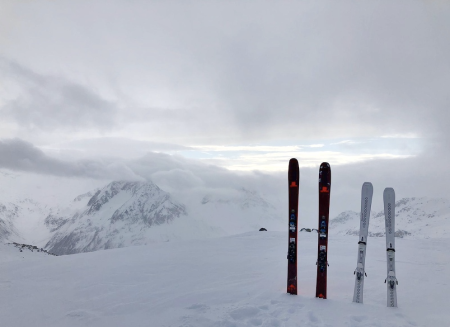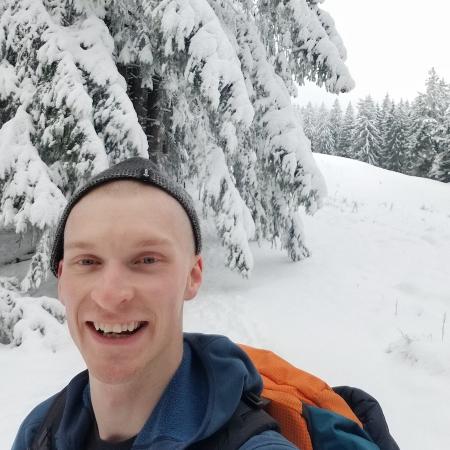12.01.2020 -- #
Marked by the start of the ski season winter is officially underway in Munich. The lack of snow in the city has been made up for by weekends in the mountains. Already took my new skis down some steep lines on the glaciers Hintertux and Stubai. During the weeknights skiing has also been on the mind researching avalanche safely in preparation to learn ski touring this year. Unfortunately not everything went as smoothly as planned.
Last year my Line Sir Francis Bacon skis took a really unfortunate core shot that hit at such an unlucky angle as to bend out the side walls. After only one season of use I was back in the store this year looking for a new skis. The crtiera was a pair that could ride normal days at the resort on groomers, between the pists, in and out of the forests, and lift hikeable terrain. Also they needed to be light enough drag up local peaks with skins on. Inspired by one of my skiing idols Cody Townsend and his The Fifty project I went with Salomon QST 106 with Salomon Shift bindings. They are not the lightest pairing but so far they are great on and off piste and I hope to report back soon that they are manageable on the up.

my new skis on first off piste of the season
Getting into touring besides watching lots of documentaries and getting hyped about skiing big lines, has been a serious research, planning, and financial commitment. So far I’ve talked to friends in the outdoor community about how they got into it and laid out a plan for myself. More then just getting the equipment and heading up the mountain ski touring requires knowledge of how to safely travel through avalanche terrain and knowing what to do in case something should go wrong. Similar to multi pitch climbs you are truly on your own in many cases and rely on good partners. Single best resource for learning has been Staying Alive Avalanche Terrain by Bruce Tremper. Besides reading I’ve got a two day course coming up early February and then trips planned with experienced partners. I’m hoping to the start of a fun and safe ski touring career.
I would to have started tourning sooner but my ski season is currently on pause nursing a hand injury back to health. Being out of sports has given me time to reflect on safety and the personal responsibility in the mountains.
“An expert is a man who has made all the mistakes which can be made, in a narrow field.”
- Niels Bohr
Making mistakes is crucial to learning, but in the mountains since we are often facing high consequences, special care has to be taken to keep these mistakes within an acceptable range. One aspect sticking out to me recently from experience and reading, is the effect of group dynamics on keeping risk to this acceptable range. How sometimes dealing with social situations around determining risk can be just as important as technical knowledge. Here I’d like to share a list ripped from the book mentioned above:
Six most common heuristic traps leading to avalanche fatalities:
- Familiarity (doing with is familiar)
- Acceptance (seeking acceptance by others)
- Commitment (committed to a goal, identity, or belief)
- Expert halo (following an “expert” who really isn’t one)
- Tracks (local facilitation)
- Scarcity (competition for resources or among others)
Definitely something I’ll be keeping in mind in while planning and executing adventures to come.
“We are imperfect beings. No matter what you know or how you operate 95 percent of your life, you’re not a perfect person. Sometimes those imperfections have big consequences.”
- Mary Yates, window of professional avalanche forecaster who died in avalanche

hiking after injury